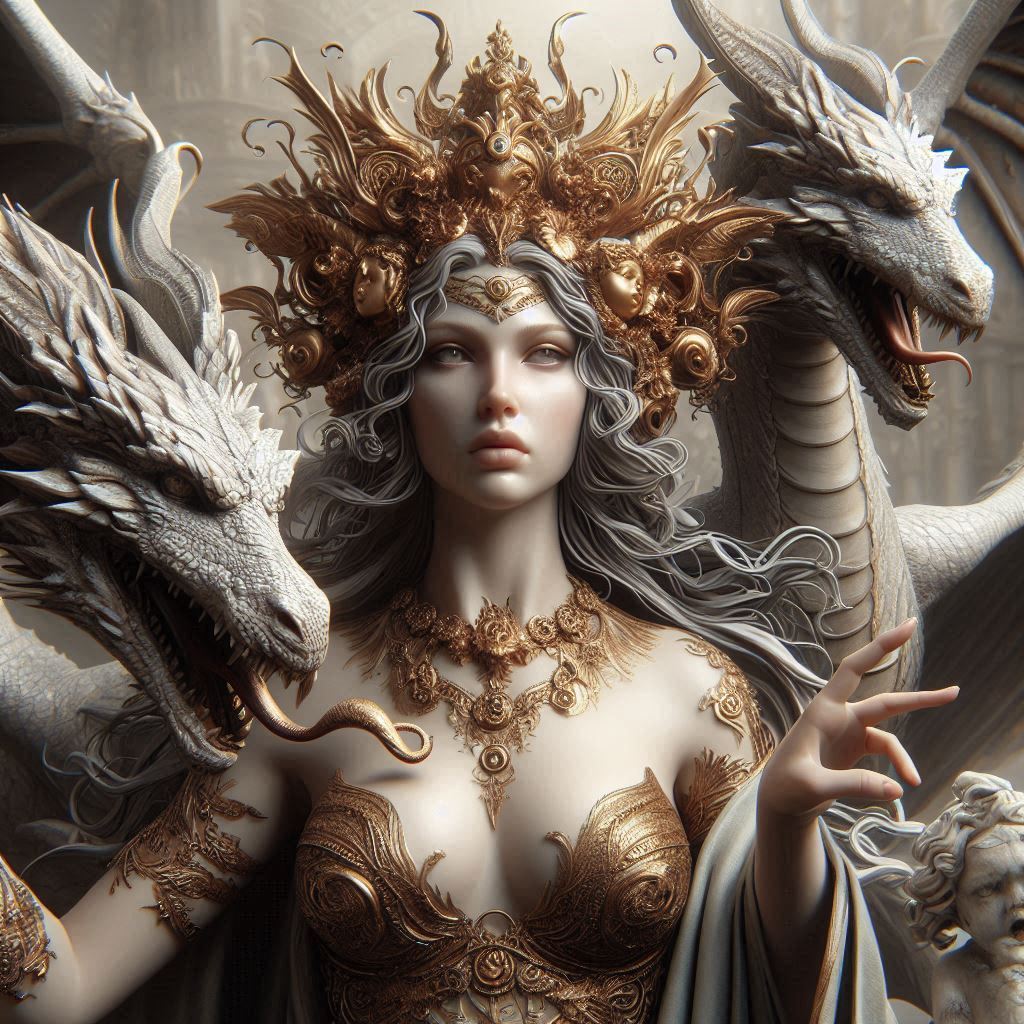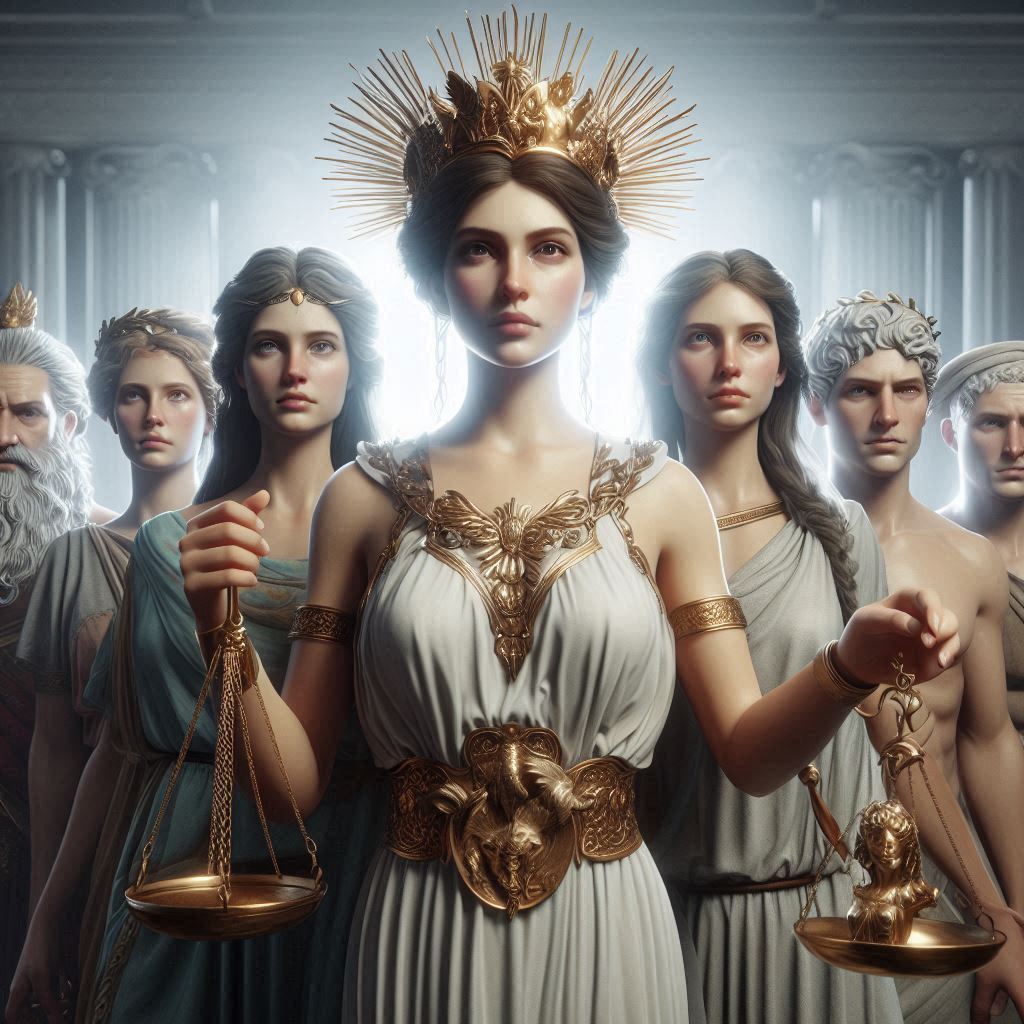Table of Contents
Rhaenyra Targaryen: The Realm’s Delight and the Struggle for the Iron Throne
Rhaenyra Targaryen, known as “The Realm’s Delight” in her youth, is one of the most significant and tragic figures in the A Song of Ice and Fire universe created by George R. R. Martin. Her life, chronicled primarily in Fire & Blood and House of the Dragon, is a story of ambition, power, and the devastating civil war known as the Dance of the Dragons, which was fought over the Iron Throne of Westeros.

Early Life: The Realm’s Delight as Rhaenyra Targaryen
Rhaenyra was the first-born child of King Viserys I Targaryen and his first wife, Queen Aemma Arryn. As the only surviving child from this union, Rhaenyra was doted upon by her father and raised at court in King’s Landing, learning the responsibilities of ruling. Rhaenyra Targaryen was a dragonrider like her ancestors and claimed her dragon, Syrax, at a young age, further cementing her connection to her Targaryen lineage.
From her early years, Rhaenyra was regarded as the presumed heir to the Iron Throne. After the death of her mother and the lack of male heirs, Viserys officially named Rhaenyra his successor, expecting the lords of Westeros to swear fealty to her. This was a remarkable decision in a patriarchal society where the throne traditionally passed through the male line. Rhaenyra Targaryen, a strong-willed and politically astute young woman, embraced her role as future queen. The court and the people adored her beauty and grace, earning her the title “The Realm’s Delight.”
The Rise of Conflict: Marriage, Heirs, and Politics
Rhaenyra’s path to the throne was complicated by her father’s remarriage to Lady Alicent Hightower. Alicent gave birth to several sons, most notably Aegon II, who would later become her rival for the Iron Throne. This marriage shifted the political dynamics in the court, creating a divide between those who supported Rhaenyra’s claim and those who believed Aegon II, as the king’s eldest male child, should succeed his father.
To further cement her claim, Rhaenyra was wed to Ser Laenor Velaryon, a match meant to solidify the alliance between House Targaryen and the powerful House Velaryon. Although Ser Laenor was rumored to be more interested in male companionship than in his wife, Rhaenyra Targaryen gave birth to three sons: Jacaerys, Lucerys, and Joffrey Velaryon. However, gossip in the court insinuated that these children were not fathered by Laenor but by Rhaenyra’s lover, Ser Harwin Strong, a knight of questionable reputation. The dubious parentage of her sons would later be a key factor in the legitimacy disputes over her claim to the Iron Throne.
Rhaenyra’s second marriage to her uncle, Prince Daemon Targaryen, after Laenor’s untimely death, further inflamed tensions. Daemon was a controversial figure, feared for his ambition and ruthlessness, but a man of undeniable martial prowess and political acumen. Their marriage produced two additional sons, Aegon the Younger and Viserys.
The Dance of the Dragons: A Civil War
When King Viserys I Targaryen died, the simmering tensions between the factions loyal to Rhaenyra and those supporting her half-brother Aegon II erupted into open conflict. Despite Viserys’s clear proclamation that Rhaenyra was his heir, the “Green” faction, led by Queen Alicent Hightower and her supporters, crowned Aegon II as king in a secret ceremony, effectively usurping Rhaenyra’s claim.
This act ignited a brutal civil war known as the Dance of the Dragons, a catastrophic conflict that would plunge the realm into chaos. Rhaenyra, based on Dragonstone, was crowned queen by her own supporters, forming the “Black” faction. What followed was a war fought both with swords and dragons, with devastating losses on both sides. The dragons themselves, once symbols of Targaryen power, became instruments of destruction, as they turned on each other in battle.
Rhaenyra’s determination to rule was unwavering, and she initially gained significant victories. However, the toll of the war was immense. Her son, Lucerys Velaryon, was killed by Aemond Targaryen, one of Aegon’s brothers, in a dragon battle that deeply affected both sides. Later, her son Joffrey would die as well, compounding her grief and losses.
Rhaenyra’s fortunes declined as the war dragged on. Political alliances shifted, betrayals weakened her position, and the people of Westeros grew weary of the carnage wrought by the conflict. Her eventual capture and fall came when Aegon II’s forces took King’s Landing. In a final act of cruelty, she was fed to Aegon’s dragon, Sunfyre, ending her life in a gruesome and public manner.
Legacy and Impact
Rhaenyra’s life and the Dance of the Dragons had profound consequences for Westeros and the Targaryen dynasty. The civil war led to the near-extinction of the Targaryen dragons and significantly weakened the dynasty’s grip on power. The deep scars left by the conflict sowed distrust and instability, which would eventually contribute to the downfall of the Targaryens in later generations.
Despite her tragic end, Rhaenyra remains a symbol of female ambition and a reminder of the complexities of power in a patriarchal society. Her struggle against deeply ingrained gender biases resonates with modern readers and viewers of House of the Dragon, where her character is brought to life. Her tenacity, flaws, and eventual downfall offer a cautionary tale about the price of ambition and the devastating costs of civil war.
In many ways, Rhaenyra’s life can be seen as a reflection of the Targaryen dynasty’s broader arc: marked by brilliance, power, and tragedy. Her desire to rule in a world that denied her legitimacy based on her gender adds depth to her character and highlights the themes of succession, loyalty, and ambition that permeate George R. R. Martin’s works.
Conclusion
Rhaenyra Targaryen’s story is one of ambition thwarted by betrayal and gender politics, of power struggles that ravaged a kingdom, and of a woman who dared to challenge the norms of her time. Her legacy, though tragic, remains one of the most pivotal in the history of Westeros, shaping the fate of the Iron Throne and the Targaryen dynasty for generations to come. The Dance of the Dragons not only defined her life but also the future of the realm, making her one of the most fascinating figures in the rich tapestry of George R. R. Martin’s world.


No responses yet